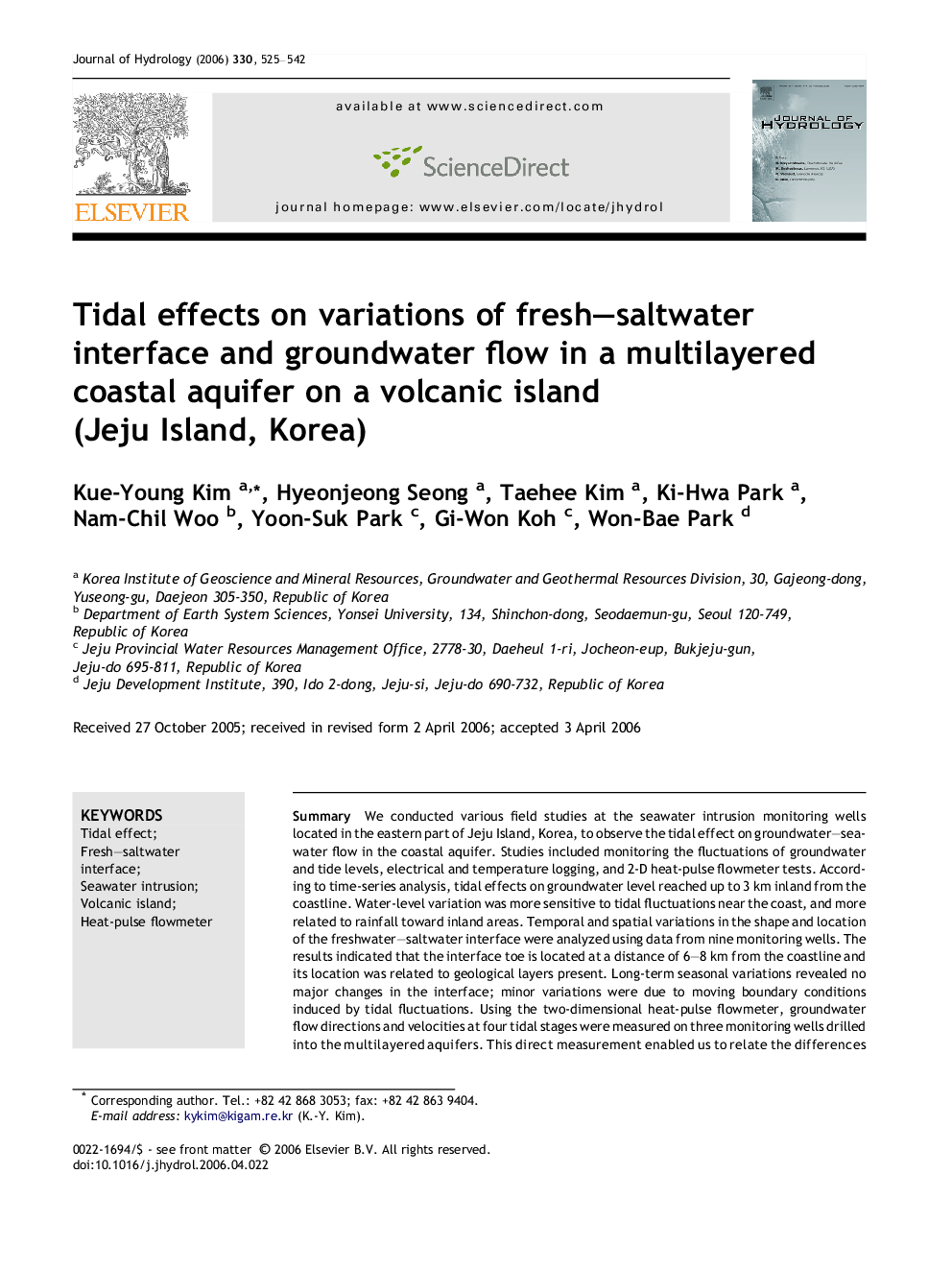| Article ID | Journal | Published Year | Pages | File Type |
|---|---|---|---|---|
| 4580423 | Journal of Hydrology | 2006 | 18 Pages |
SummaryWe conducted various field studies at the seawater intrusion monitoring wells located in the eastern part of Jeju Island, Korea, to observe the tidal effect on groundwater–seawater flow in the coastal aquifer. Studies included monitoring the fluctuations of groundwater and tide levels, electrical and temperature logging, and 2-D heat-pulse flowmeter tests. According to time-series analysis, tidal effects on groundwater level reached up to 3 km inland from the coastline. Water-level variation was more sensitive to tidal fluctuations near the coast, and more related to rainfall toward inland areas. Temporal and spatial variations in the shape and location of the freshwater–saltwater interface were analyzed using data from nine monitoring wells. The results indicated that the interface toe is located at a distance of 6–8 km from the coastline and its location was related to geological layers present. Long-term seasonal variations revealed no major changes in the interface; minor variations were due to moving boundary conditions induced by tidal fluctuations. Using the two-dimensional heat-pulse flowmeter, groundwater flow directions and velocities at four tidal stages were measured on three monitoring wells drilled into the multilayered aquifers. This direct measurement enabled us to relate the differences of flow velocities and directions with geology and tidal fluctuations. Combining the results of EC logging and flowmeter tests, we found a zone where freshwater and saltwater moved alternately in opposite directions, as influenced by the tidal fluctuations. Integrating various physical logging and flowmeter data with water-level fluctuations improved our understanding of the behavior of fresh and seawater flow in the coastal aquifers.
